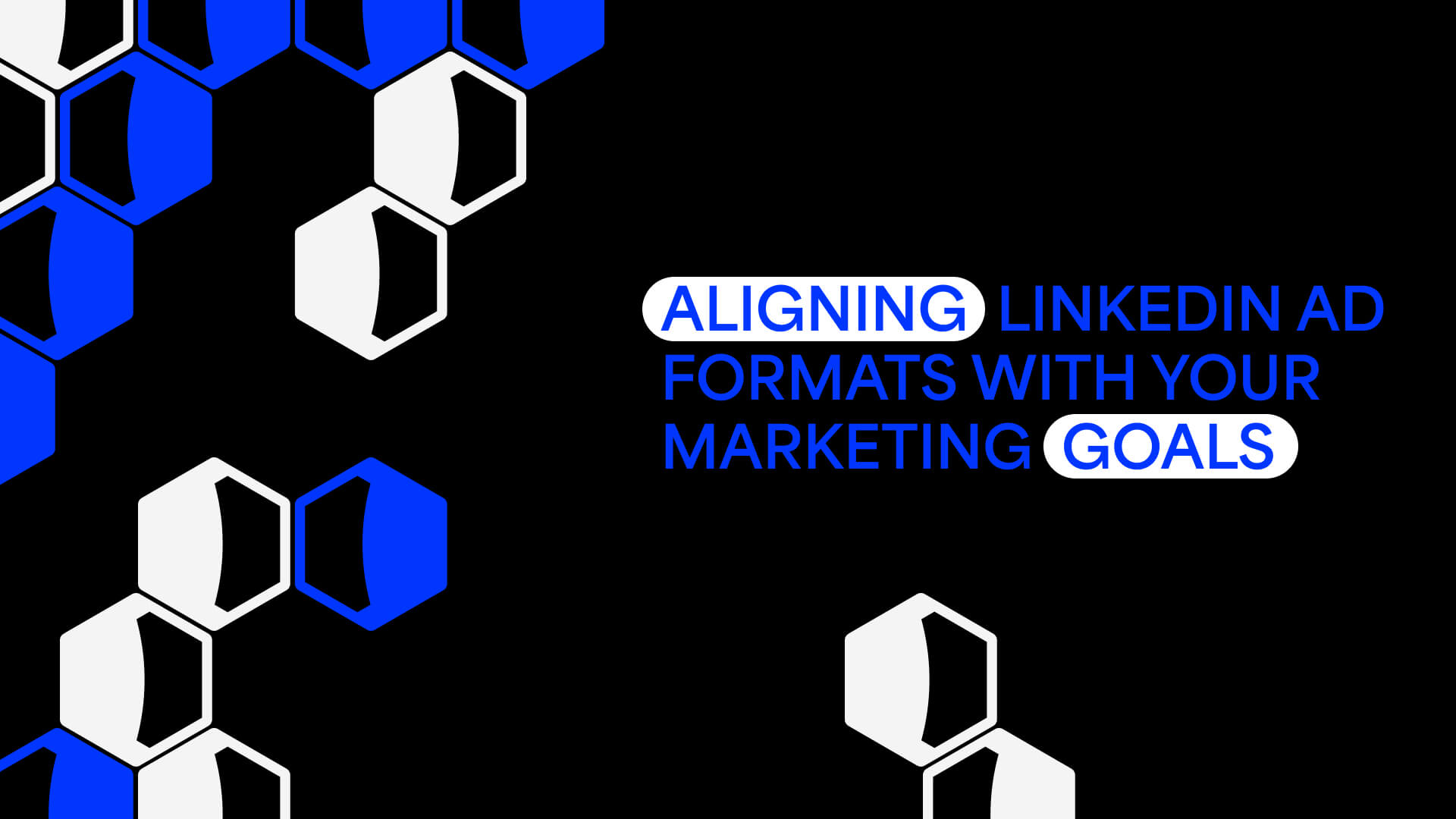When you’re setting up LinkedIn ad campaigns, it’s really important to match your ad formats with your marketing goals. LinkedIn gives you a variety of ad formats, all covered in this handy blog post, that work at different stages of your marketing journey. So whether you’re raising awareness, nurturing interest, or driving conversions, picking the right format for each stage helps you guide your audience smoothly along their journey. Let’s take a look at how that looks across the funnel.
Top of Funnel (TOF): Building Awareness
At the top of the funnel, your primary goal is getting your brand seen by as many eyes as possible. So think increasing brand visibility and generating awareness among your ICP. Ad formats that capture attention and engage viewers are key at this stage. Video ads are particularly effective here, as they allow you to show your brand’s personality and story in a dynamic way. And you don’t need to have video produced in Hollywood with big budgets. Think more authenticity.
Another great option is the newer thought leader ads and boosted posts. These can help establish authority, build trust and pitch your brand as an expert. The key is to use formats that quickly grab attention and make a memorable impression.
Middle of Funnel (MOF): Nurturing Interest
Once you’ve captured your audience’s attention, the next step is to nurture their interest and build trust. At this stage, you’ll want to give more detailed information and keep people engaged. Single image ads can work well here. Think about highlighting benefits, calling out your audience in the creative and offering helpful content that your audience will be pleased to see pop up in their feed. Another format we love is the document ad. These allow you to share in-depth content like eBooks, whitepapers, or case studies. Serve up a snippet of the content and if your audience is hungry for more, they’ll gladly pay with an email address.
Bottom of Funnel (BOF): Driving Conversions
At the bottom of the funnel, your focus shifts to driving action and converting leads. For this stage, ad formats that facilitate direct engagement and simplify the conversion process are essential. Lead gen forms are great because they keep everything on the LinkedIn platform, meaning less friction and making it super simple for people to convert. Message ads can also be powerful, providing a personal touch and prompting immediate responses. We also like Conversation ads, where the recipient can self-serve depending on where they are in the buying journey. Perhaps they aren’t ready for that demo or free trial just yet. These formats are designed to prompt action and guide people to conversion.
Tips for Aligning Ad Formats with Goals
- Understand Your Objectives: Be clear about your goal at each stage. Are you trying to get your name out there, warm up leads, or close the deal? Pick an ad format that matches what you’re aiming for.
- Target Audience Preferences: Consider the preferences and behavior of your target audience. Are they big fans of in-depth whitepapers or does snackable, short-form content work better?
- Monitor Campaigns: Always track how your ads are doing. Try A/B testing to see which formats work best at each stage and adjust as you go. Hint, we have some tips on A/B testing here.
- Stay Consistent: Make sure your message is the same across all your ads and stages. It keeps things clear and helps build trust in your brand.
Conclusion
Choosing the right LinkedIn ad formats based on your goals is important for the success of your campaigns. Stay focused on your goals, match your ads to what your audience likes, and keep tweaking things based on how well they perform. With this approach, you’ll be well on your way to running LinkedIn campaigns that impress your audience and delight your manager!
